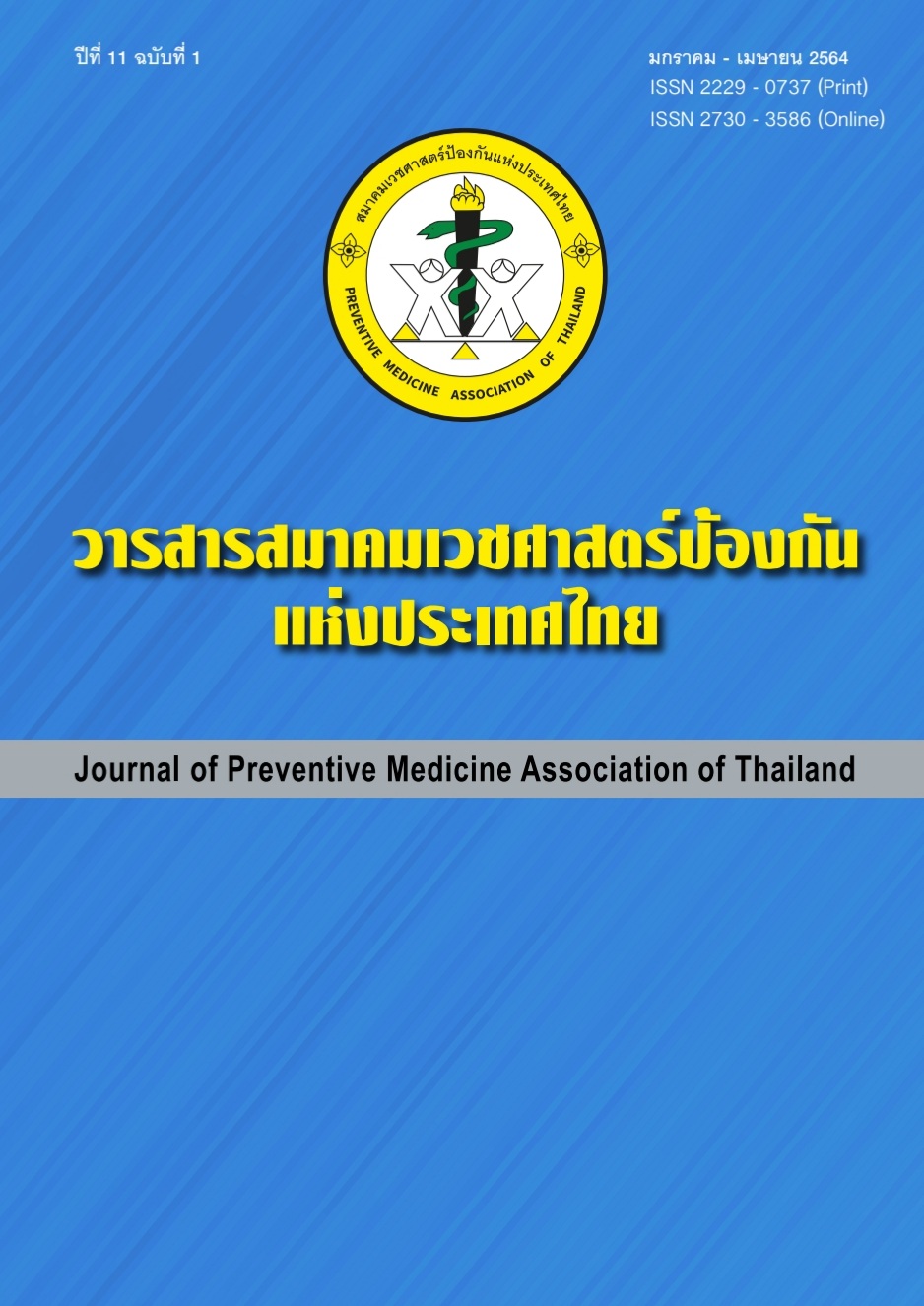Factor Associated with Health Literacy in Type 2 Diabetic Patients
Keywords:
Glycemic control, Health literacy, Type 2 diabetic patientsAbstract
Diabetes mellitus is one of the critical noncommunicable diseases (NCDs) in Thailand. Poor glycemic control adversely affects patients’ quality of life, financial status, family and the Nation. Health literacy plays a major factor in good glycemic control. The objective of this research is to study factor associated with health literacy of 476 type2 diabetic patients at Primary Care. To find out, the researchers conveniently conducted an interview of random patients from August to November 2020. Patients were divided into 2 equal groups. (238 people with high health literacy and 238 with low health literacy). An interview included related factors, patients’ history, personal traits, HbA1C level, and level of health literacy in 7 aspects. Data analysis of descriptive statistics involved percentage, average, standard deviation, and analytic statistics, for example, Independent t-test, Chi-square test, or Fisher exact test. The overall results were analyzed on Multivariate analysis from Binary Logistic Regression. In conclusion, the result indicates that patients with high health literacy tend to have good glycemic control. The ratio of glycemic control (HbA1C < 7%) in patients with high health literacy is much better 2.22 times (OR 2.22, 95%CI 1.33-3.70) compared to those with low health literacy. The result suggests that doctors should evaluate health literacy and encourage type 2 diabetic patients to enhance the health literacy. The more health literacy patients have, the better glycemic control they will be.
References
Emerging Risk Factors Collaboration, Sarwar N, Gao P, Seshasai SR, Gobin R, Kaptoge S, et al. Diabetes mellitus, fasting blood glucose concentration, and risk of vascular disease: a collaborative meta-analysis of 102 prospective studies. Lancet 2010;375(9733):2215-22.doi:10.1016/S0140-6736(10)60484-9.
International Diabetes Federation. Diabetes Atlas Vol. 2013. 6th ed. Brussels, Belgium: International Diabetes Federation (IDF); 2013.
ราชวิทยาลัยอายุรแพทย์แห่งประเทศไทย ในพระบรมราชูปถัมภ์. แนวทางเวชปฏิบัติสำหรับโรคเบาหวาน 2560. กรุงเทพฯ: ราชวิทยาลัยอายุรแพทย์แห่งประเทศไทยในพระบรมราชูปถัมภ์; 2560.
Health literacy: report of the Council on Scientific Affairs. Ad Hoc committee on health literacy for the council on scientific affairs, American Medical Association. JAMA 1999;281:552-7.
Mayeaux EJ Jr, Murphy PW, Arnold C, Davis TC, Jackson RH, Sentell T. Improving patient education for patients with low literacy skills. Am Fam Physician 1996;53:205-11.
Schillinger C, Grumbach K, Piette J, Wang Frances, Osmond D, Daher C. Association of Health Literacy With Diabetes Outcomes. JAMA 2002;288(4):475-82. doi:10.1001/jama.288.4.475
วรรณรัตน์ รัตนวรางค์, วิทยา จันทร์ทา. ความฉลาดทางสุขภาพด้านพฤติกรรมการดูแลตนเองกับการควบคุมระดับน้ำตาลในเลือดของผู้ป่วยเบาหวานชนิดที่ 2 จังหวัดชัยนาท. วารสารวิทยาลัยพยาบาลบรมราชชนนี นครราชสีมา 2561;24:34-51.
Junkhaw T, Munisamy M , Samrongthong R, Taneepanichskul S. Factors Associated with Health Literacy in Suburban Bangkok Type 2 Diabetics (T2DM). J Med Assoc Thai 2019;102:809-15.
กิตติพศ วงศ์นิศานาถกุล. ความฉลาดทางสุขภาพของผู้ป่วยโรคเบาหวานที่เข้ารับบริการ ณ ศูนย์เวชปฏิบัติครอบครัว โรงพยาบาลพระนครศรีอยุธยา. วารสารสมาคมเวชศาสตร์ป้องกันแห่งประเทศไทย 2561;8:49-61.
ชนวนทอง ธนสุกาญจน์, นรีมาลย์ นีละไพจิตร. การพัฒนาเครื่องมือวัดความรู้แจ้งแตกฉานด้านสุขภาพ (Health literacy) สำหรับผู้ป่วยโรคเบาหวานและโรคความดันโลหิตสูง. นนทบุรี: กองสุขศึกษา กรมสนับสนุนบริการสุขภาพ กระทรวงสาธารณสุข; 2558.
Downloads
Published
How to Cite
Issue
Section
License
บทความที่ลงพิมพ์ในวารสารเวชศาสตร์ป้องกันแห่งประเทศไทย ถือเป็นผลงานวิชาการ งานวิจัย วิเคราะห์ วิจารณ์ เป็นความเห็นส่วนตัวของผู้นิพนธ์ กองบรรณาธิการไม่จำเป็นต้องเห็นด้วยเสมอไปและผู้นิพนธ์จะต้องรับผิดชอบต่อบทความของตนเอง






